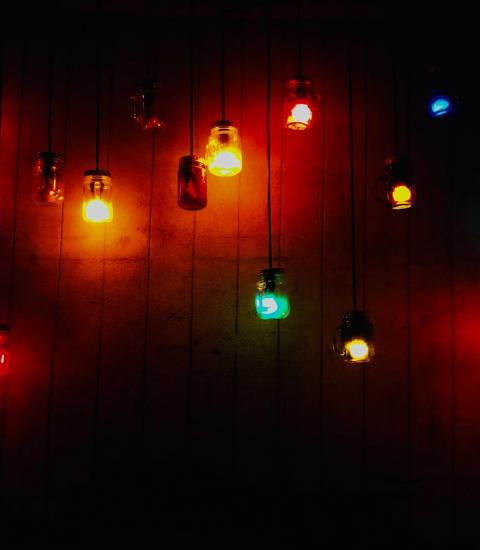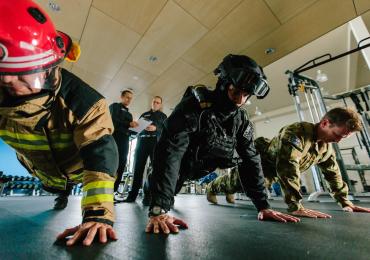
When confronted with complaints about lighting, a common strategy in workplaces is to measure the illuminance with an illuminance (lux) meter to determine if the lighting complies with relevant standards.
“It’s 400 lux on the desks. That meets the requirements listed in the standards. Why is everyone so upset?”
Measuring illuminance with a lux meter is only one lighting parameter: the amount of light incident on a surface. While this is important for tasks such as reading paperwork, it doesn’t tell the whole story.
What factors are important for lighting an indoor space?
According to the International Standard ISO 89951, there are three criteria for lighting:
- It should be visually comfortable.
- It should allow people within the space to perform visual tasks easily and comfortably.
- People should be able to navigate within the space safely.
The Australian Standard AS/NZS 1680.12 concur with these criteria, but adds an extra element: the lighting should provide an appropriate visual environment. For example, the type of lighting that is provided for a car park might be more functional than pretty:
(Photo: unsplash, Aditya Rathod)
whereas the type of lighting used within a restaurant would need to be attractive as well as functional.
(Photo: unsplash, Rohan G)
Lighting is more than illuminance
Although many people consult lighting standards to determine recommended illuminance levels, the standards include other parameters for consideration. These include:
- The evenness of illuminance. Some variation in illuminance can add visual interest to a space, but large variations could make some areas appear gloomy.
- Luminance. This is the luminous intensity of a light source or a surface as seen from a particular direction. It is measured with a luminance meter in candelas per metre squared, and can be used to quantify reports of glare.
- The direction of light, also known as “modelling”. This is important for highlighting objects and texture, but if used poorly can create unwanted shadows.
(Photo: unsplash, Gianandrea Villa)
- Colour rendering index (CRI) provides an indication of how faithfully colours can be seen under a particular light source. This is important for quality control work, such as in the printing industry.
- Correlated colour temperature (CCT), measured in Kelvin (K) describes the colour appearance of light. For example, a lamp with a warm colour appearance will have a CCT less than 3000K:
(Photo: unsplash, Will Cook)
whereas a lamp with a cool colour appearance will have a CCT greater than 6000K.
(Photo: unsplash, Andrew Scofield)
A more detailed summary of these parameters is provided by Osterhaus and co-authors in “Lighting at computer workstations” published in WORK3.
New horizons for the assessment of light
There is emerging evidence that non-visual effects of light can also affect our comfort, performance and satisfaction. These include circadian effects (the effect of light on our sleep-wake cycle), visual discomfort in response to flicker, the effect of light on alertness and our emotional responses to light, for example, does the lighting make people “feel good”?
The International Commission on Illumination (CIE) published a position statement on this topic in October 20194. They are working to develop guidelines and recommendations for the non-visual effects of light and are collaborating with the International Standards Organisation to revise the indoor lighting standard ISO 8995.
There are also proposals for new metrics for specifying and measuring light in the built environment. For example, Cuttle proposes that instead of measuring illuminance, it would be better to measure the luminous flux emerging from a surface as this provides a better indication of the quantity and distribution of light within a space5.
“The lighting is terrible in here”
Next time you look at a room and think “The lighting is terrible in here” ask yourself “Why?” Is it the amount of light? Is it glare? The colour of the light? Aesthetics? Or is it some other reason?
Reaching for your lux meter can be useful. But it won’t tell you the whole story.
References
1. International Standards Organisation. ISO 8995: 2002 Lighting of indoor work places. Geneva2002.
2. Standards Australia, Standards New Zealand. Australian / New Zealand Standards AS/NZS1680.1: 2006 Interior and workplace lighting Part 1: General Principles and recommendations. Standards Australia; 2006.
3. Osterhaus W, Hemphälä H, Nylen P. Lighting at computer workstations. Work. 2015;52(2):315-328. https://content.iospress.com/articles/work/wor2163
4. Commission Internationale De L'Eclairage. CIE Position Statement on Non-Visual Effects of Light - Recommending proper light at the proper time. 2019. http://cie.co.at/publications/position-statement-non-visual-effects-light-recommending-proper-light-proper-time-2nd
5. Cuttle C. A fresh approach to interior lighting design: The design objective - direct flux procedure. Lighting research and technology. 2018;50:1142-1163. https://journals.sagepub.com/doi/abs/10.1177/1477153517734401
Jennifer Long works as a visual ergonomist in Australia. She helps businesses create products and work environments that are comfortable for people’s eyes and allow them to see with ease. www.visualergonomics.com.au



